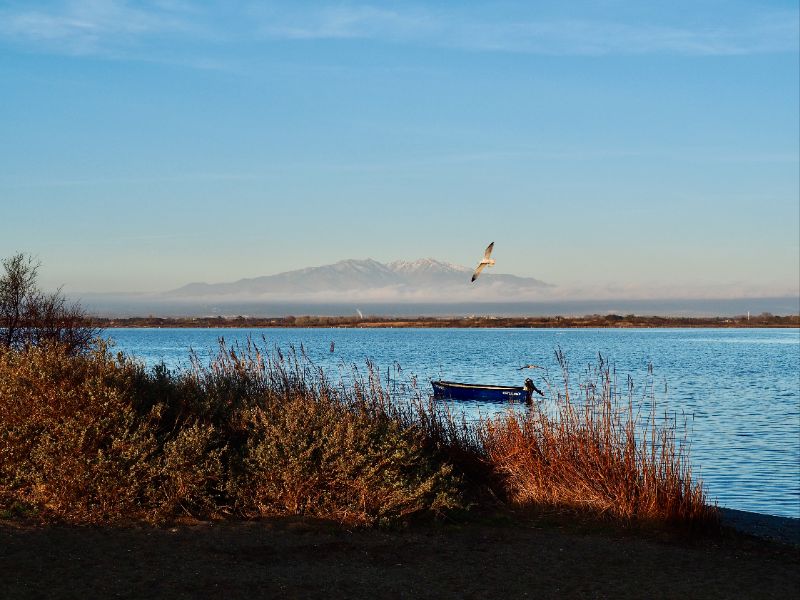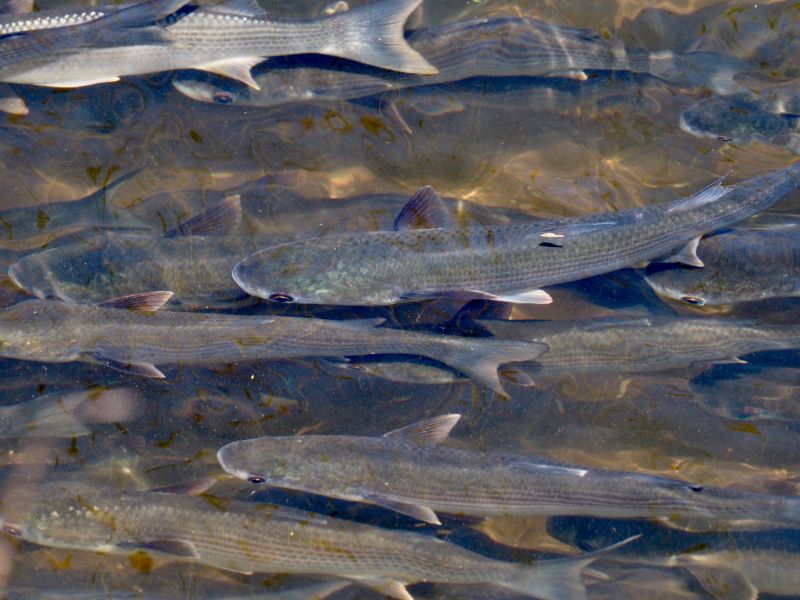The nature of Canet lagoon (part 1)
Along the coast between Canet en Roussillon and Saint Cyprien, you will find the best walking, and picturesque fishermen’s “village” with ancient huts that have been refurbished with traditional materials, including reeds that are abundant here.

The shallow, southernmost lagoon of Languedoc-Roussillon has been fished by man for centuries. While a few fishermen continue the tradition, these days it also attracts tourists, dog walkers and birdwatchers. It’s a protected Natura 2000 site for habitat, and the combination of coastal lagoon, Mediterranean salt steppes and temporary ponds provides an important haven for wildlife – especially birds.

It’s impossible to walk all the way round, but you can access it on the western side, from Saint-Nazaire and Alénya. This inland approach can provide a rewarding contrast of wildlife species. It’s interesting year-round but spring can be best, when fish are spawning and birds are returning to Europe from Africa.
Flora
Reeds (le roseau commun) predominate the shores of the lagoon and glasswort (la salicorne) covers much of the marshland:

Small-flowered tongue-orchid (la sérapias à petites fleurs), sea spurge (l’euphorbe du littoral) and water-purslane (le pourpier des marais) can apparently also be found here.
Glasswort turns pink in water.
Fauna
Despite fishermen’s complaints that fish stocks are severely depleted these days, clearly some fish are surviving. One cold, windy April day, I witnessed an amazing spectacle of thousands of grey mullet preparing to spawn in the Agouille de la Mar.

Most were facing upstream, packed together like … erm, sardines, though not quite touching one another. The shoal stretched like a huge shadow as far as I could see downstream.
Here’s a 50-second clip of them.
Unlike mullet, spawning carp (la carpe) get up very close and personal. All of which make easy pickings for ospreys (les balbuzards pêcheurs) on migration. These raptors feed exclusively on fish, and – unusually – one even stayed around the lagoon this last winter.
Among non-fish-eating species, other impressive raptors to look out for passing through in spring include: Black kite (les mailans noirs) and Short-toed Snake Eagles (les circaètes Jean le Blanc).
It’s an important wintering ground for some species of duck, as well as coot (les foulques macroules) and flamingos (les flamants roses).
Depending on the time of year, some other birds you might see:
|
Coming up in part 2 Like everywhere else, the lagoon is increasingly at risk due to climate change, but five years ago a vicious invader came in from the sea and now threatens not only the fishermen’s livelihoods but the eco-system itself. |

